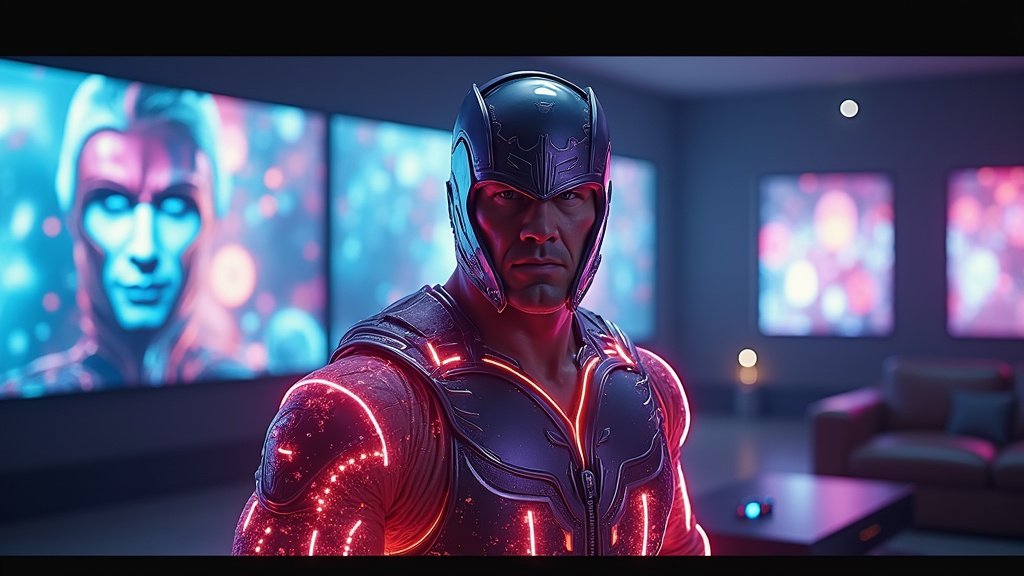“The Hunting Party” has captivated audiences with its intricate storytelling and multifaceted characters. Among the serial killers featured, Roy Barber stands out as the most complex and twisted, making Season 1 Episode 5 a memorable installment. This episode not only deepens the murder mystery but also solidifies the relationships among the team members, providing a rich tapestry of emotional and psychological nuances.
The Evolution of the Murder Mystery
In Season 1 Episode 5, the narrative takes several unexpected turns. The murder mystery unfolds in a way that keeps viewers guessing, showcasing the writers’ ability to craft a compelling plot. As the team investigates, the dynamics between characters evolve, moving beyond mere procedural elements to explore deeper emotional connections. While procedural dramas often shy away from romance, the coded relationships between Bex, Shane, and Oliver add layers to the story.
Childhood Trauma: A Catalyst for Violence
One of the central themes in this episode is the impact of childhood trauma on adult behavior. The series does not condone murder but emphasizes that witnessing violent abuse during childhood can severely traumatize individuals. Roy Barber’s backstory is particularly harrowing; his father killed his mother and then took his own life when Roy was still a teenager. This traumatic event left Roy isolated, as he had never forged close relationships beyond his mother. The repercussions of this early trauma manifest in his later life as he becomes known as the Couple’s Killer, claiming 16 victims—roughly one each year.
Psychiatrists labeled Barber as a full-blown schizoid, indicating his preference for isolation and his aversion to social interaction. Ironically, he found solace in his artwork, particularly in a place called the Pit, where he could sketch his victims without the distractions of the outside world. However, when the prison he was in exploded, it unleashed the full extent of his dangerous tendencies.
Roy Barber’s Artistic Talent and Its Dark Implications
Roy Barber’s capacity for art became a double-edged sword. Initially, he worked at amusement parks, but his skills sharpened when he became a police sketch artist. This role not only honed his artistic abilities but also provided him with insights into police investigations and how to evade detection. His art became a chilling tool in his series of murders.
In the first episode of the season, Barber’s obsession with a past mission resurfaces, leading to the deaths of another couple, John and Crystal Resnick. As the investigation unfolds, the team uncovers a shocking truth: Crystal Resnick had never existed prior to 2001, the year of Roy’s arrest. This revelation ignites suspicions that the women associated with Barber may not have been dead after all. Bex’s discovery of Barber’s sketches further complicates the narrative, as she realizes the women’s ages in the sketches had changed, while the men’s ages remained static.
Bex: “Because Roy knew the women weren’t actually dead.”
The team grapples with the possibility that these women might still be alive, necessitating a deeper investigation into Barber’s motives and methods.
Messy Marriages and Roy Barber’s Justifications
Roy Barber’s twisted sense of morality led him to believe he was saving women from abusive marriages. His own mother’s fate haunted him; unable to protect her, he took it upon himself to intervene in the lives of other women. Working at the police station exposed him to various charges filed against men, such as drunken disorderliness and larceny. This knowledge fueled his delusion that he was liberating these women by eliminating their husbands.
The complexity of Barber’s actions becomes evident when he discovers that some women, despite being supposedly liberated, found themselves in similarly abusive situations. His return to violence, highlighted by the murders of the Resnicks and his attempt to kill Linda’s new husband, reveals the cyclical nature of abuse and its impact on his psyche.
Bex’s lack of sympathy for Linda and other women adds another layer to the narrative. Although Roy Barber’s actions are reprehensible, his traumatic background evokes a sense of empathy, illustrating how deeply rooted childhood experiences can shape an individual’s fate.
The Dynamics of the Trio: Bex, Shane, and Hassani
A significant strength of “The Hunting Party” lies in its character dynamics. The interactions between Bex, Shane, and Hassani create an engaging and relatable team. Their camaraderie mirrors that of iconic television trios, such as Wyatt, Lucy, and Rufus from “Timeless.” Over time, the characters evolve from strangers to a cohesive unit, building trust and reliance on one another.
The humor shared between Hassani and Shane lightens the bleak subject matter, providing moments of levity amidst the darkness of their investigations. Their banter often takes place in transit, as they discuss the motivations behind Barber’s gruesome acts.
Hassani: “So, the guy doesn’t like to socialize. Trust me, I get it. Wouldn’t it be easier to be a hermit? Why bother murdering couples?”
Bex: “Because after being raised by less-than-stellar parents, he became absolutely fascinated with love.”
These moments of dialogue not only deepen character development but also serve to explore broader themes of love, trauma, and the human condition.
Bex’s Complicated Love Triangle
While “The Hunting Party” is not primarily a romantic series, the emotional undercurrents in Bex’s relationships with Shane and Oliver add depth to the narrative. Shane often acts as Bex’s protector, demonstrating concern for her safety during investigations. Their shared moments, such as a pizza date while watching a game, evoke a sense of nostalgia and warmth, contrasting with the grim realities of their work.
Oliver, on the other hand, represents a more complicated emotional past for Bex. Their history adds tension to their professional interactions, especially as Oliver tries to maintain a boundary after breaking her trust years ago. However, subtle moments of connection hint at unresolved feelings, suggesting that their story may not be over.
Bex: “It’s okay. Everyone should get a card on their birthday or a cupcake.”
This line encapsulates the longing for connection and normalcy in a world filled with chaos.
Unraveling Government Secrets
Hassani’s investigations lead to the discovery of secretive government operations that further complicate the narrative. His digging into satellite images reveals that Silo 12 holds significant secrets, suggesting that the government may be hiding darker truths beyond the Pit. The intervention of higher-ups reinforces the sense that the team is treading dangerous ground, as their inquiries threaten to expose something more sinister.
This subplot adds an element of suspense, leaving viewers wondering what lies beneath the surface of the story. The tension between Hassani and Bex, who are both determined to uncover the truth, promises to lead to further conflict and revelations.
“The Hunting Party” Season 1 Episode 5 masterfully weaves together themes of trauma, morality, and the complexities of human relationships. Roy Barber, as both a product of his past and a perpetrator of violence, serves as a haunting reminder of how childhood experiences can shape one’s future. The intricate dynamics among Bex, Shane, and Hassani elevate the narrative beyond a traditional procedural drama, creating a compelling story that resonates with viewers.
As the season unfolds, questions remain about the true nature of love, the scars of trauma, and the secrets that lie beneath the surface of society. Fans of “The Hunting Party” are left eager to discover how these threads will intertwine in the episodes to come. What are your thoughts on Roy Barber’s character? Do you empathize with him, or do you see him as a menace? And which team are you on—Team Shane or Team Oliver? Let us know in the comments below!





